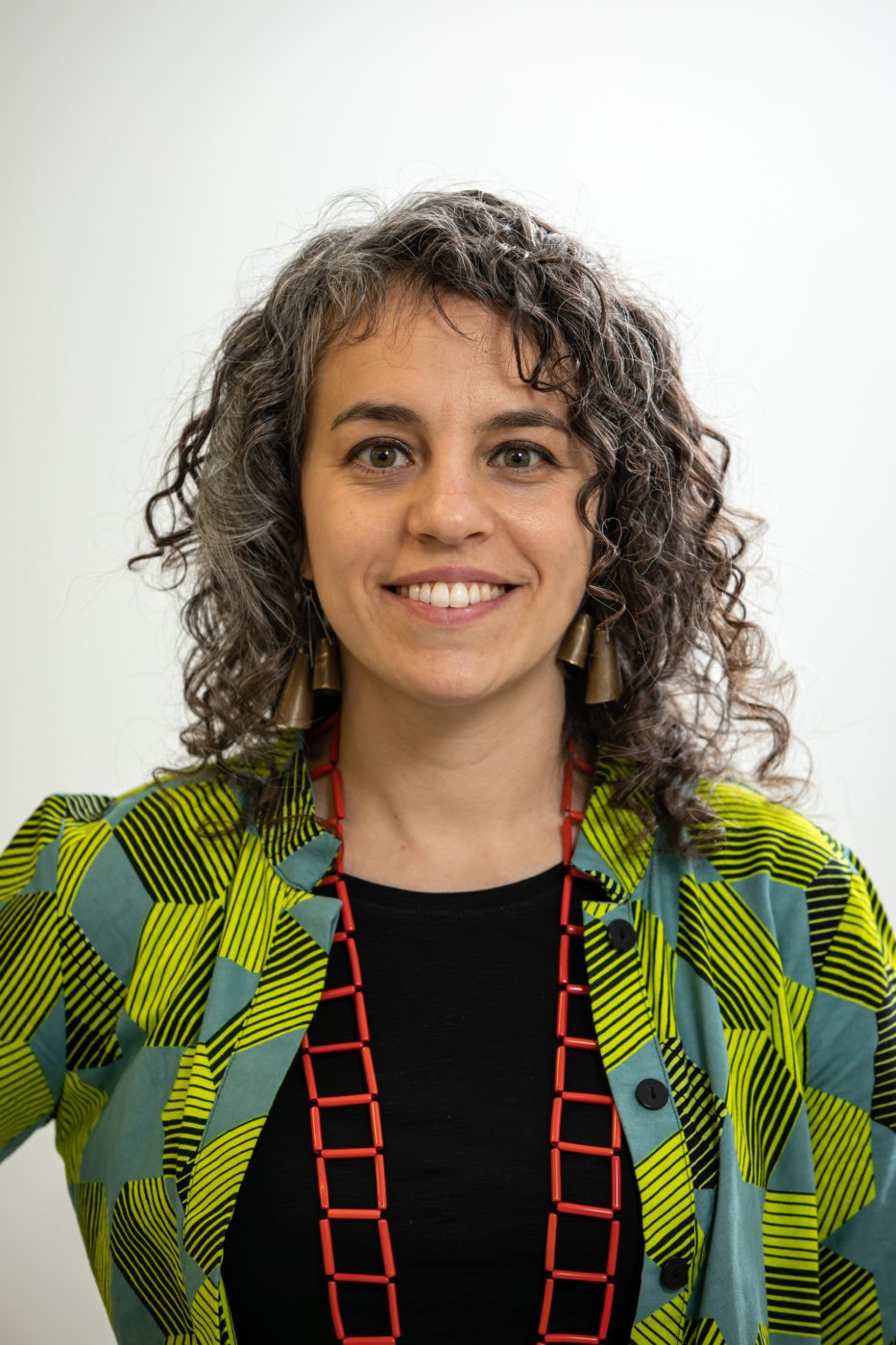
Image courtesy of The Corning Museum of Glass.
Susie J. Silbert
Susie J. Silbert (1981– ) studied glass, textiles, and ceramics at the University of Wisconsin-Madison, receiving her BFA in 2003. She worked as a curator and collaborator in the Mark Peiser Studio for four years as well as in a variety of other curatorial positions before and after earning an MA in decorative arts, design history, and material culture from Bard Graduate Center in 2012. She taught glass history at the Rhode Island School of Design for four years while also working as an independent curator and writer. Since 2016, Silbert has been the curator of postwar and contemporary glass at The Corning Museum of Glass, where she also edits the New Glass Review. In 2019 she organized the exhibition New Glass Now, an international survey of contemporary glass.
Media
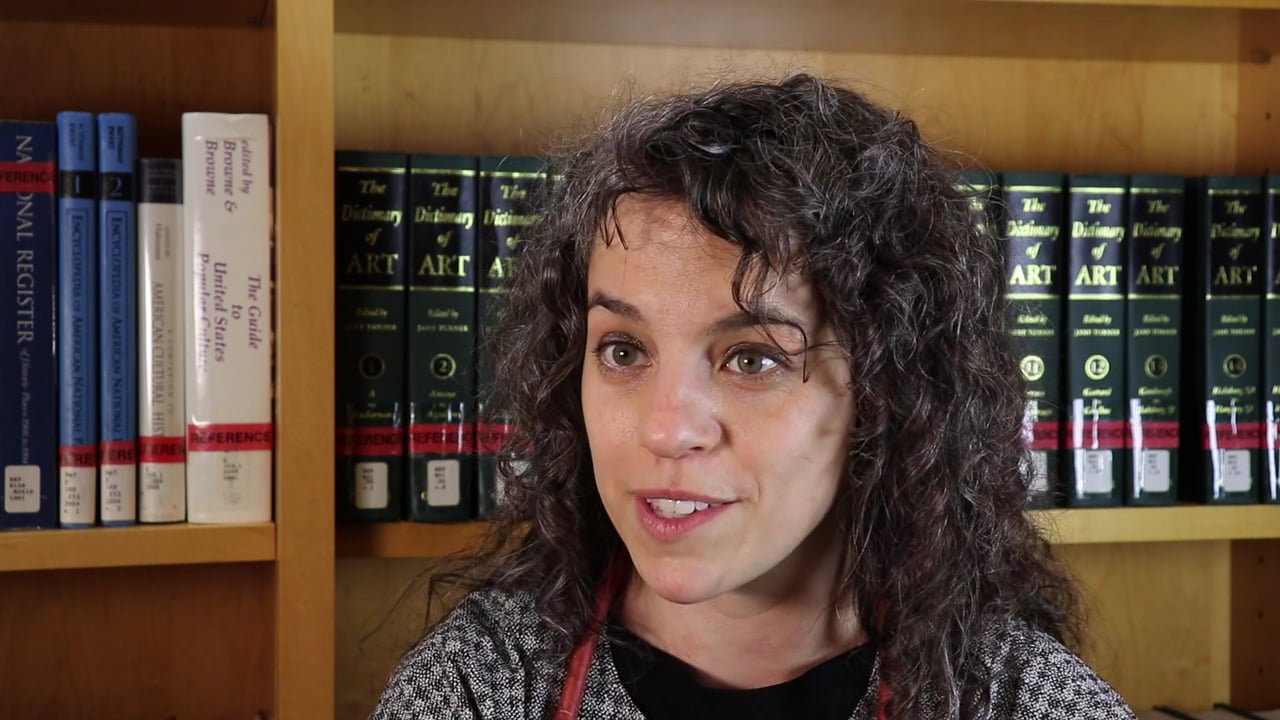

Susie Silbert talks about the impetus for the New Glass Now exhibition.
01:10 TranscriptSusie Silbert talks about the impetus for the New Glass Now exhibition. Oral history interview with Susie Silbert by Catherine Whalen, February 25, 2020, Bard Graduate Center. Clip length: 01:09.
Susie Silbert: I’d love to say that I had the show—the idea for the show all by myself without any help from my friends, but actually the idea for the show comes from the history of the institution and the history of the field of contemporary glass itself. So The Corning Museum of Glass organized the first major survey of contemporary glass anywhere in the world in 1959. It was called Glass 1959, and the show is the show that gave the field its name. Like, it was the first time that designers and proto-studio glass makers from around the world really thought of themselves as part of something greater. And it is the exhibition that laid the groundwork—I think of it like laying a fertile soil for the explosion of studio glass just a couple of years later. In 1979 that museum reprised the exhibition in New Glass Worldwide Survey, which traveled across the country and traveled globally and brought the idea of artists working with the material to new audiences. And so, knowing that it was the fortieth anniversary and 2019, I wanted to do a show that would similarly catalyze new opportunities in the field of contemporary glass.
Permalink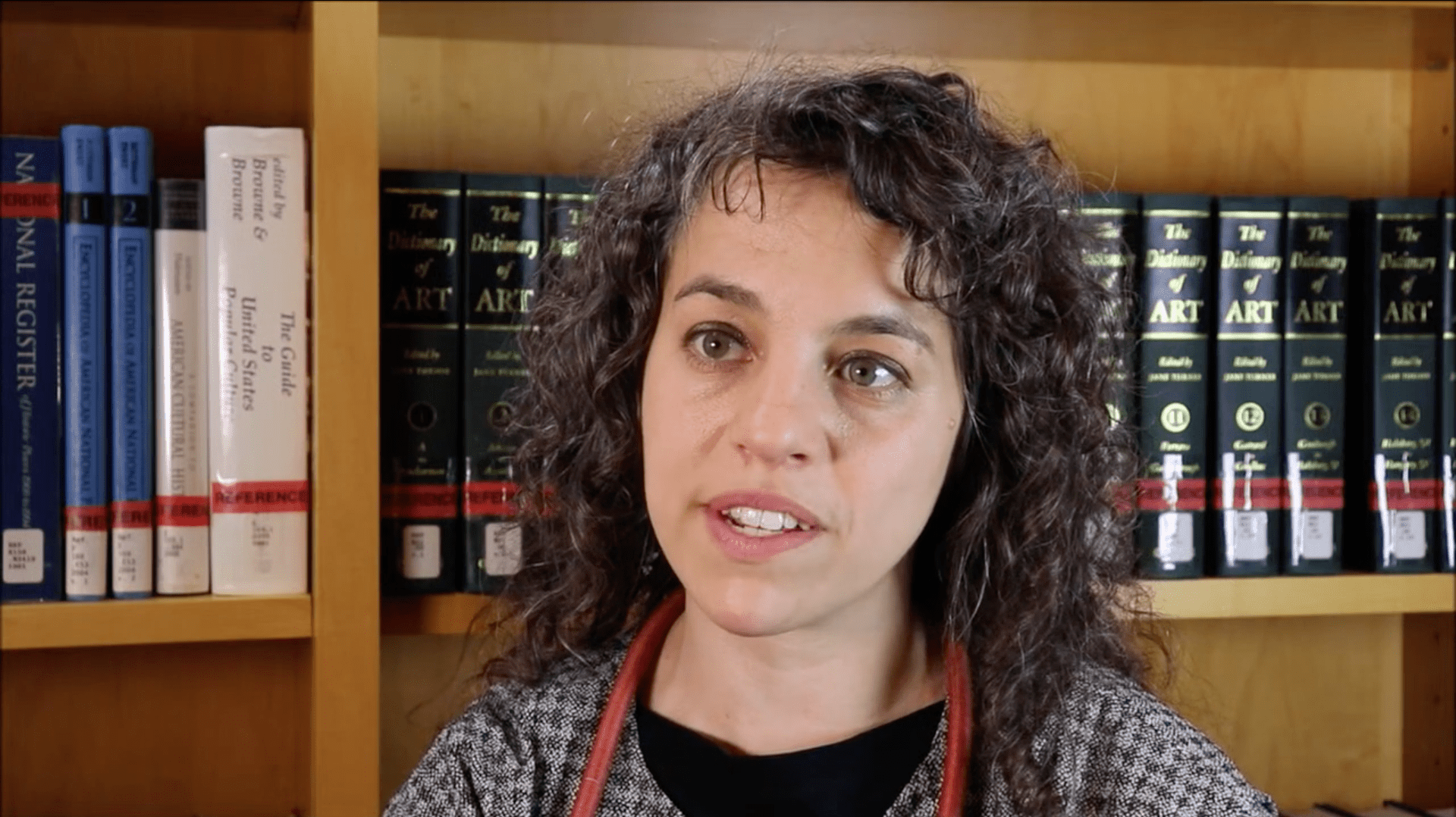
Susie Silbert discusses New Glass Now engaging queer glass.
02:16 TranscriptSusie Silbert discusses New Glass Now engaging queer glass. Oral history interview with Susie Silbert by Catherine Whalen, February 25, 2020, Bard Graduate Center. Clip length: 02:15.
Susie Silbert: One of the works in New Glass Now, although directly dealt with LGBTQIA issues, it was a video and an object by Hungarian artist Tamash Abel who is very young. And he made a reflective pride flag mirror using traditional Hungarian glass laminating techniques which he then took to the National Monument in Budapest and to the Washington Monument in DC and reflected the pride flag right onto those monuments. I think are really like delicate, subtle, and beautiful statement of presence for the queer communities in both those spaces. And that piece is a very overt—embrace, I think, of the queer community. There are other pieces in the show that are more nuanced in that queerness of their work. But it was only in putting this exhibition together that I realized that—as far as I know, and I don’t know everything—I can’t think of another time in the history of glass and a major exhibition setting where there had been a discussion of queerness or queer glass, and I thought that that was like, crazy, you know, given that in ceramics and textiles and jewelry, queering the material has been part of that process since the sixties, and then again in the 2000s and late nineties. So I am super happy to have provided a space where those conversations can begin to happen, and it’s nice to see that some of that has been embraced in other parts of the glass community. And my hope is that this exhibition and subsequent exhibitions and subsequent displays can make a more inclusive space in glass for queer folk and for all different kinds of—all different kinds of expressions and all different kinds of people. What I wanted with that exhibition and what I think I was successful with, was to create a place where there was room for everyone, not just all different kinds of makers, but also all different kinds of viewers, and I hope that that carries forward too.
Permalink
Susie Silbert discusses New Glass Now engaging queer glass.
2:16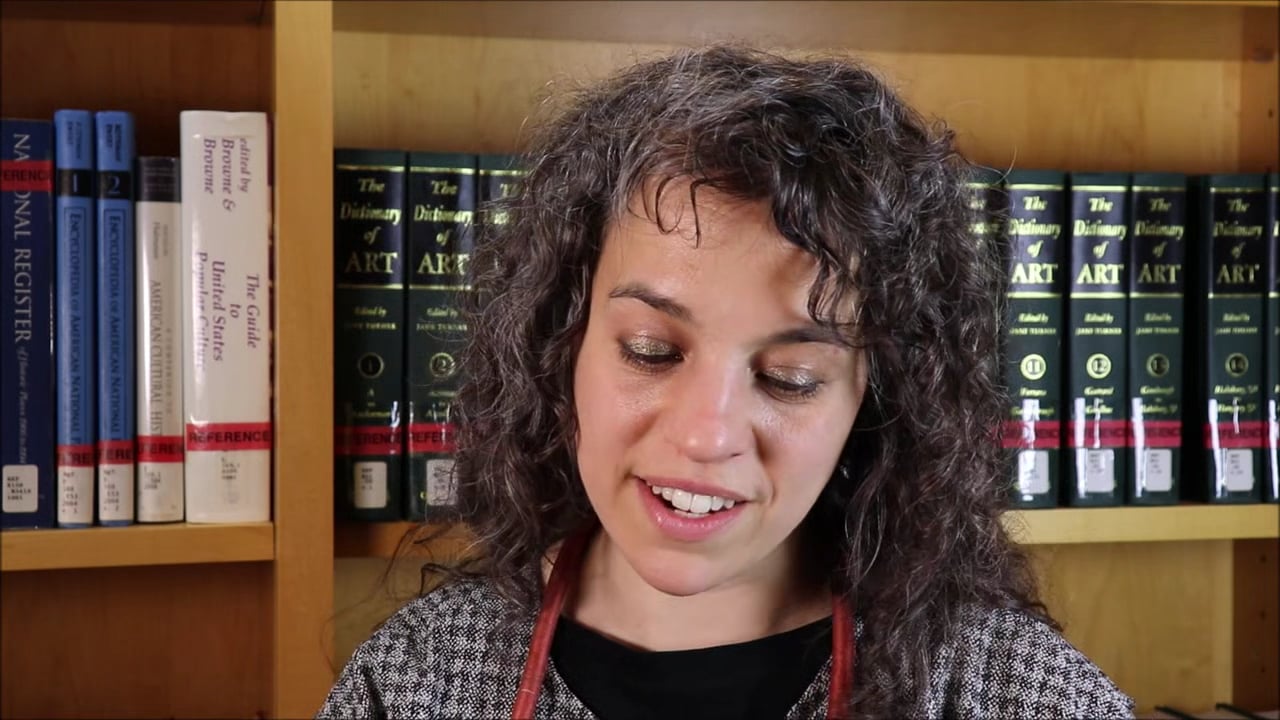
Susie Silbert discusses what intrigued her about glass.
0:54 TranscriptSusie Silbert discusses what intrigued her about glass. Oral history interview with Susie Silbert by Catherine Whalen, February 25, 2020, Bard Graduate Center. Clip length: 00:54.
Susie Silbert: So I knew going into college that I wanted to study glass, and when I enrolled in a glass class at the University of Wisconsin Madison where the first university glass program was, I learned that it is true: glass is very difficult. And I am pretty tenacious, so I kept going, and I think what I found and continue to find in working with the material even now as a curator is that—is that I appreciate the way that it combines artistic impulse, aesthetic impulses, and body to science. So whether or not an artist can write the chemical expressions for what’s happening, people that are successful in glass understand at a really intimate level chemistry and physics, and I am sort of endlessly fascinated by that relationship.
Permalink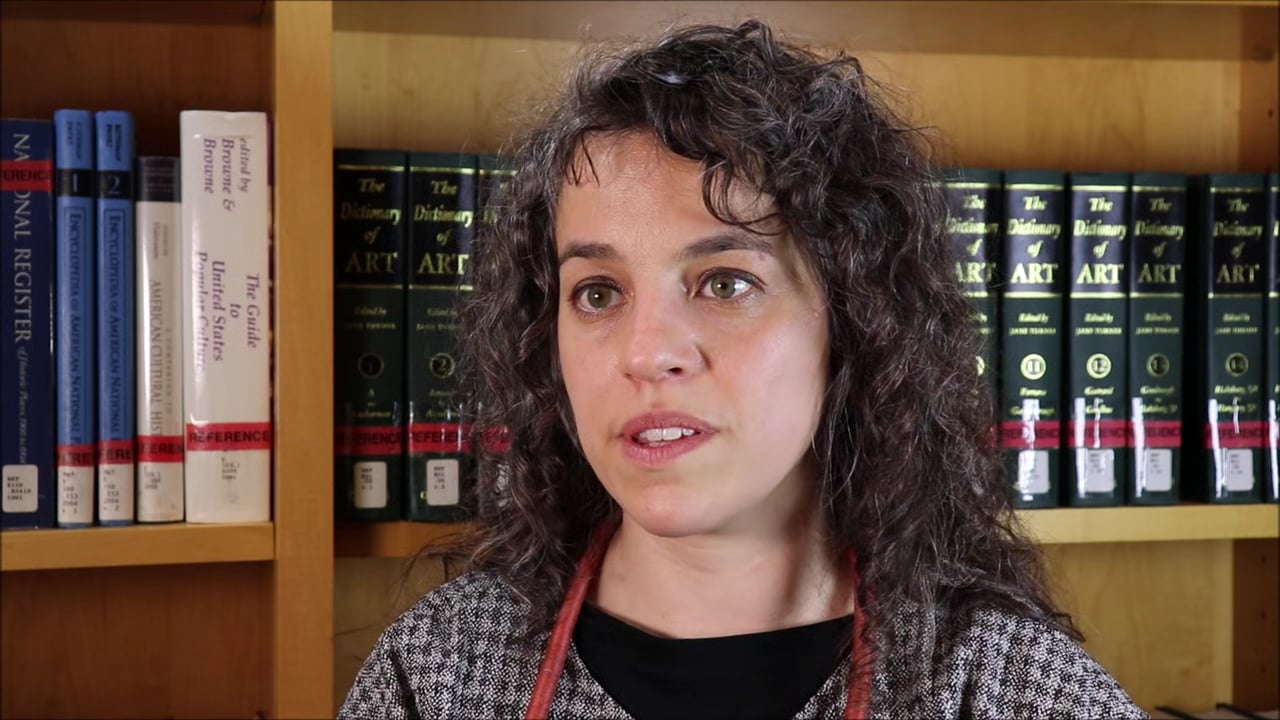
Susie Silbert talks about the experience of working for Mark Peiser and Richard Ritter at Penland.
02:21 TranscriptSusie Silbert talks about the experience of working for Mark Peiser and Richard Ritter at Penland. Oral history interview with Susie Silbert by Catherine Whalen, February 25, 2020, Bard Graduate Center. Clip length: 02:21.
Susie Silbert: Working with Mark Peiser was—continues to be—one of the most satisfying and fulfilling things of my career, of my life. I can safely say that there’s no one that’s informed my approach to glass more than Mark, and I feel very grateful for having gotten to work with him—work with somebody like Mark, who understands the material at a chemical level and whose approach has never been constrained by any histories or cultures of glass, who was somebody that was making glass seemingly without cultural constraint and without technologic constraint. Or—who used the technologic constraints to create whole worlds. Which I guess is a flowery way of saying I’m really thankful to work with somebody that was right at the beginning of studio glass. I started working with him in 2005 almost by accident. He—I met him finally after going to the Penland School of Crafts [Penland School of Craft, Bakersville, North Carolina] for four years, and I went to a studio visit while he was working on a series called the Cold Stream Cast Baskets and I’d never seen anybody form glass like that before. So I asked a lot of questions and later he said in his characteristic way, ‘I think I have some work. I’m sure you wouldn’t like to do it at all, it’s paperwork.’ [laughs] And I said, ‘Well, you know, I might be interested.’ I’d also been talking with another first generation artist, Richard Ritter, for a long time about going to work with him, so I said, ‘Why don’t you two get together and make me an offer of full time work?’ And they did. And I moved down 11 days later, to Penland from Chicago, and started working mostly for Richard and half a day for Mark, and within a year I only worked for Mark. My first job working for him was to find a decommissioned NASA nose cone [laughs] that he wanted to use as a mold. I didn’t find that, but I appreciated the—kind of expansiveness of the approach and the way that he invests in the people that he, that work for him, and the way that he creates—even unintentionally creates opportunity. So, that’s a little bit about how I work with Mark.
Permalink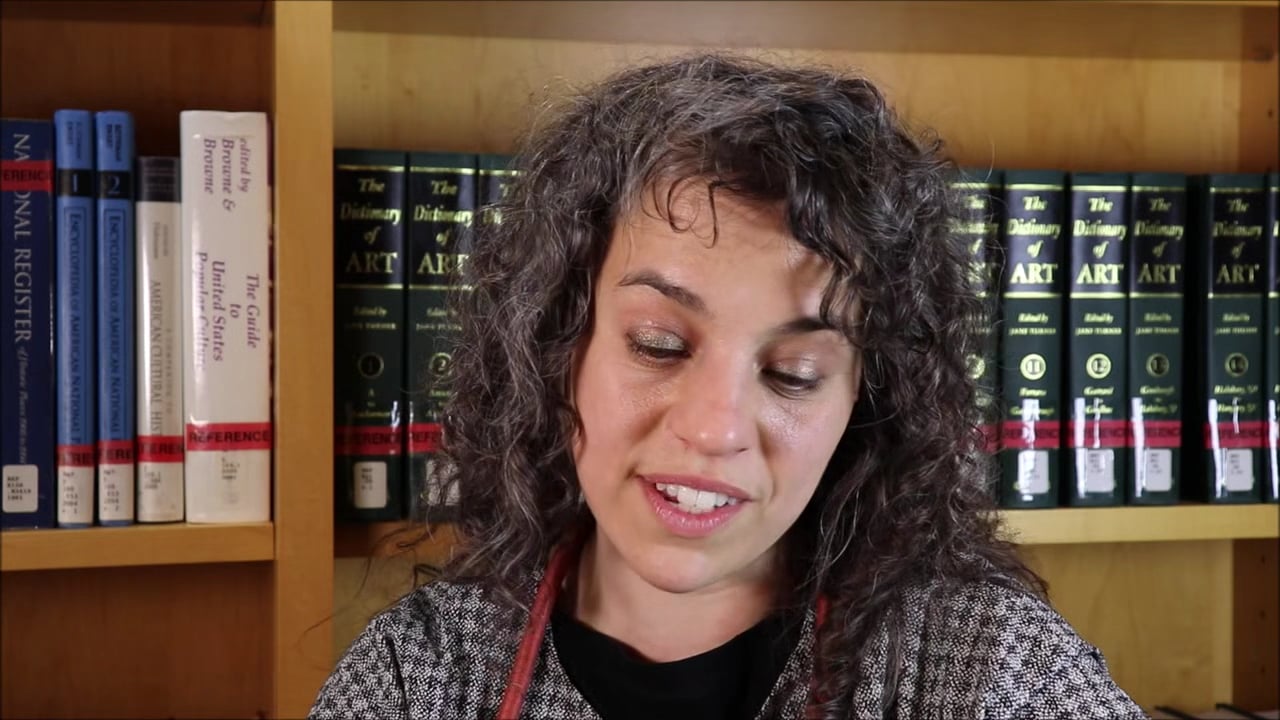
Susie Silbert discusses Mark Peiser sharing his glass knowledge.
1:00 TranscriptSusie Silbert discusses Mark Peiser sharing his glass knowledge. Oral history interview with Susie Silbert by Catherine Whalen, February 25, 2020, Bard Graduate Center. Clip length: 00:59.
Susie Silbert: Mark has always been, I think, very generous about sharing information, that’s what founding the Glass Art Society was about, and that’s what going out and demoing in Marvin Lipofsky’s class was about before that. But I think maybe one of the things that’s changed is that people ask. And when people ask, Mark answers. And one of the things that I think is the most encouraging about Mark as a craftsman and as a person to work with, and as somebody in the field is that when, when anyone is really passionate about the material, and really interested in learning—and I mean anyone: a student, a hobbyist, or a successful artist, or an aspiring one, he will share his information. And that is exactly the kind of thing that the studio glass movement was founded on, and I think that’s the same kind of approach that will keep it healthy as we move into the future.
Permalink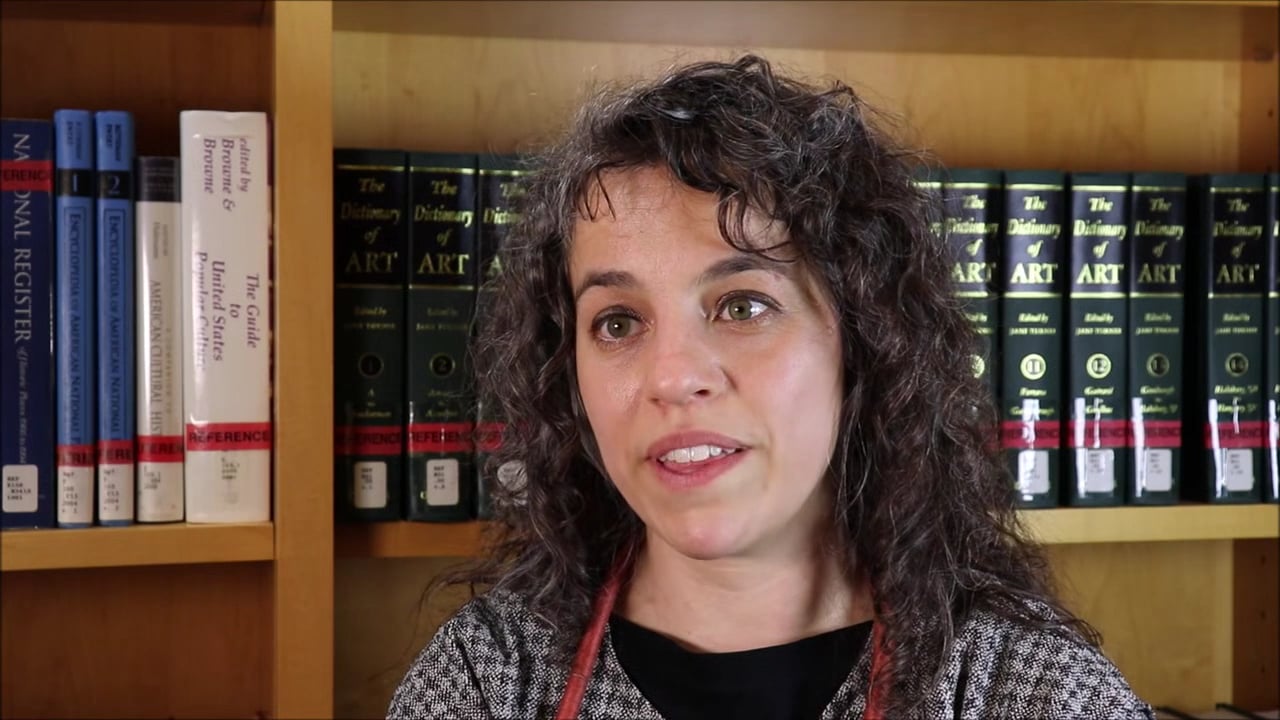
Susie Silbert, Corning Museum of Glass curator of modern and contemporary Glass and former assistant to Mark Peiser, discusses Penland.
00:57 TranscriptSusie Silbert, Corning Museum of Glass curator of modern and contemporary glass and former assistant to Mark Peiser, discusses Penland. Oral History Interview with Susie Silbert by Catherine Whalen, February 25, 2020, Bard Graduate Center. Clip length: 00:56.
Susie Silbert: I think Penland’s [Penland School of Craft, Penland, North Carolina] role can’t be discounted. It is where the Glass Art Society was formed. It is—because of the particularities of Penland, which other people can speak about more, it enabled—it created a kind of crucible of experimentation. And I think it’s notable that around Penland, even to this day, is one of the places where more people formulate and melt their own glass than anywhere else in the country, and that speaks to that real understanding of material and technique and approach, that is what Penland offers. I also think that they could do—that they have a really great opportunity to build that impact to the future, and to create opportunities to advance glass as much in the coming decades as they did at the beginning.
Permalink
Susie Silbert discusses the importance of the Heller Gallery’s Glass America shows.
1:38 TranscriptSusie Silbert discusses the importance of the Heller Gallery’s Glass America shows. Oral history interview with Susie Silbert by Catherine Whalen, February 25, 2020, Bard Graduate Center. Clip length: 01:37.
Susie Silbert: The Glass America shows that Heller Gallery [New York, New York] did when it was still called the Contemporary Art Glass Group in 1976 and 1978, were really important national surveys of glass that tried to do what the 1979 show, or what New Glass Now did today, which is bringing contemporary glass to broader audiences. And the way that they did that was by renting out the first floor of Lever House [New York, New York], which Doug Heller talks about being able to—you know, the Brownies, the Girl Scouts would have an exhibition one week, you could rent it out for glass cause he’s self-deprecating. But these big, big displays that people could come into, and learn about this field. And those shows, I think, had an incredible impact. Their—the 1978 show had, for instance, Tom Patti on the cover, and I think that that piece went straight into a New York museum collection. And I think it’s not by coincidence that the New Glass Worldwide Survey cover—catalog cover—a year later, also had Tom Patti, which was a very fraught, fraught decision. Not fraught for the museum, I don’t think, but fraught for everybody else, including Paul Smith who [laughs] chose that piece by himself. So, I think that the—starting in that time the Heller Gallery really had a vision for what the field could be and how it could get there, and how it could get there was by framing the material for people, and I think that’s something that is still alive in the way the gallery approaches glass today.
Permalink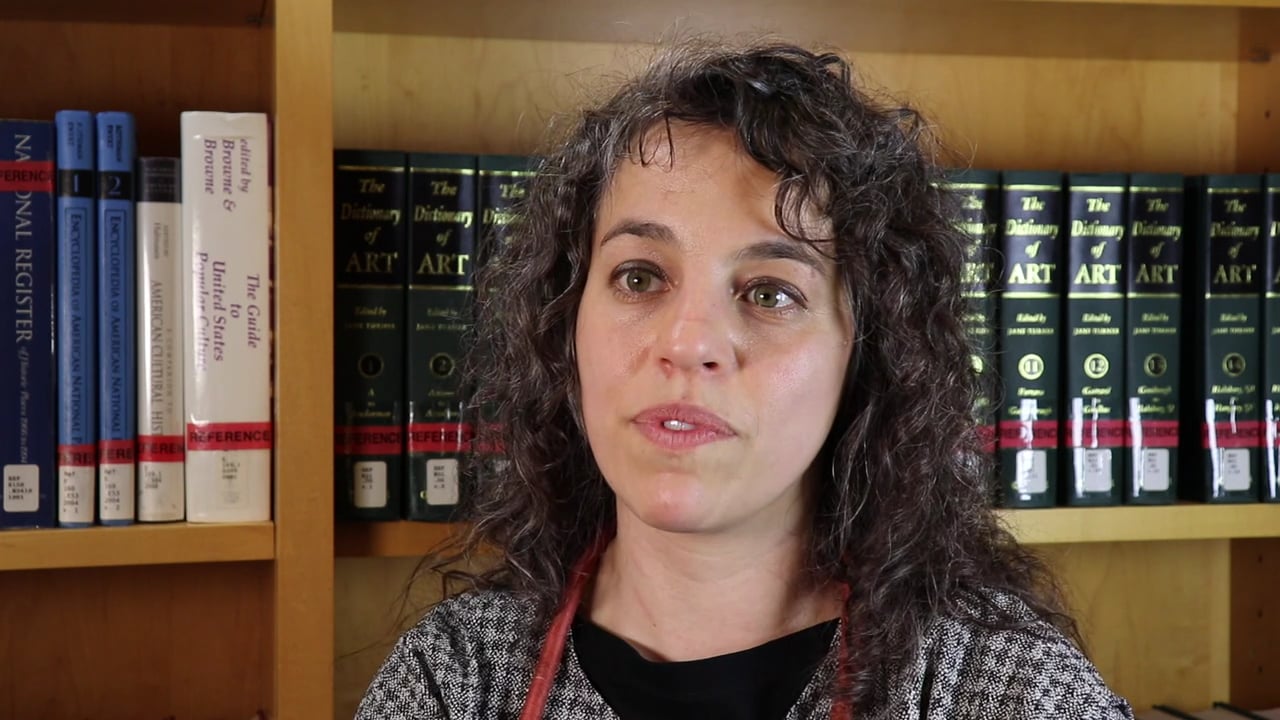
Susie Silbert talks about Habatat and Heller Galleries.
1:52 TranscriptSusie Silbert talks about Habatat and Heller Galleries. Oral history interview with Susie Silbert by Catherine Whalen, February 25, 2020, Bard Graduate Center. Clip length: 01:51.
Susie Silbert: It’s pretty interesting to have a market of contemporary glass that is in many ways dominated by two major galleries that have been there since the beginning, Heller and Habatat. And Habatat is interesting for a lot of different reasons, but even if you think about these two different—two different galleries, and the constraints put upon them. One, Heller Gallery in New York City with incredibly high rents and constrained space that that entails, and existing in a highly refined and variegated field of cultural production. Versus Habatat Gallery, which was founded in Michigan in—outside of Detroit, and maintains a very large footprint, and Habatat and over the years had spaces in Chicago, spaces in Massachusetts, and in Florida. It’s really sort of different, the kinds of approaches that enables, and the kinds of work that it can have. And I think Ferd—one of the things that Ferd and Habatat Gallery have done over the years is make glass very accessible to people, both in the way that they present the—they present glass, and the way that they talk about glass, and also in their forming, forming of glass as a social, as a really—as a social practice. So they have—they sponsor all kinds of different events. The Habatat Invitational, International Invitational, every year, now in its many—forty something year, and—or fiftieth, and they do a lot of international travel to introduce collectors to different regional markets. And I think that that packages glass in a way that makes it very approachable for very many people.
Permalink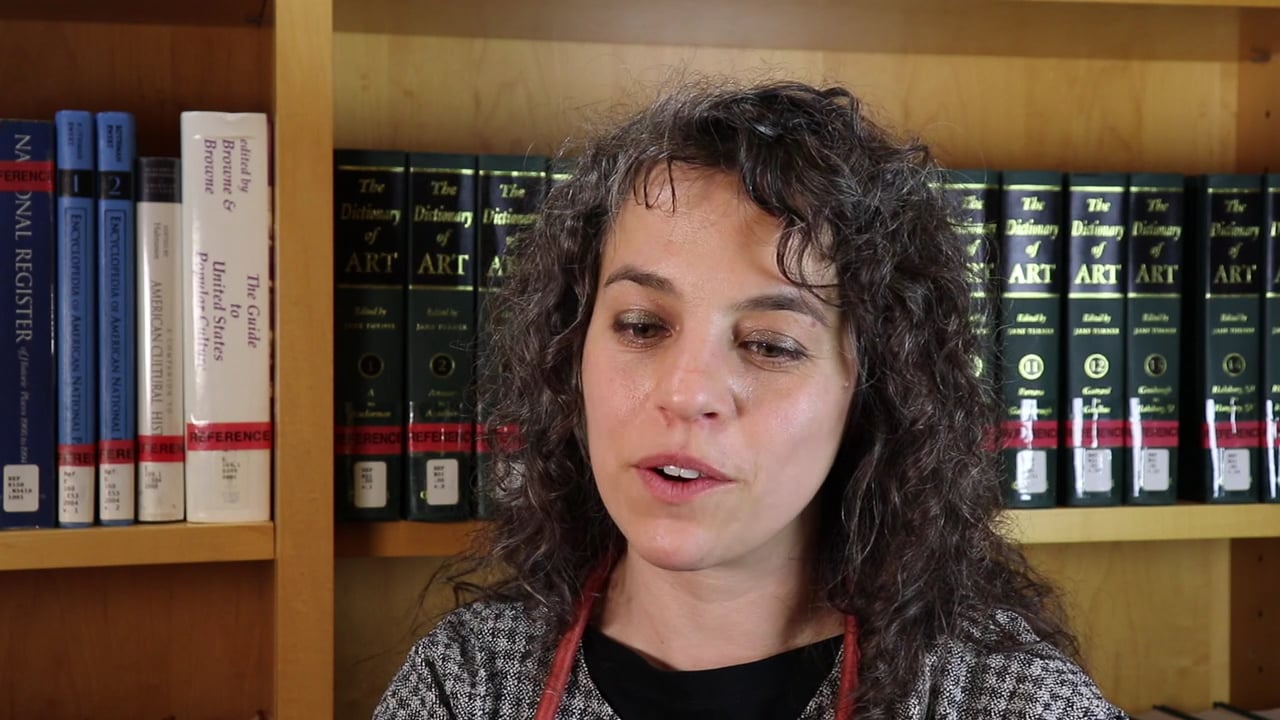
Susie Silbert discusses Paul Hollister’s writings and his description of studio glass works as “sculptural.”
1:37 TranscriptSusie Silbert discusses Paul Hollister’s writings and his description of studio glass works as “sculptural.” Oral history interview with Susie Silbert by Catherine Whalen, February 25, 2020, Bard Graduate Center. Clip length: 01:37.
Susie Silbert: One of the biggest takeaways that I have from Paul’s writing that really sticks with me, is the way that he talks about much of the work as being ‘art-like,’ or ‘art-aspirational,’ or ‘sculptural’ but not ‘sculpture.’ And I think he was making very, maybe important, nuanced distinctions about the material and maybe framing it within—he was getting at the essential question of language and how we categorize the work of studio glass: is it art, is it sculpture, is—does it make sense to use those words; should there be a different lexicon when approaching these things? And I think maybe in approaching—in approaching much of that glasswork as sculptural, he was given an opportunity to exist in a different way that maybe got—the nuance of which got lost as the field progressed, and as the desire for glass to be defined only as art without, maybe, a nuanced understanding of what art was, left off. So the idea of glass as sculpture—I think, talking about glass as sculptural, or some of the work that he was talking about, means that for anybody that would have any kind of ideological hangups about terminology could still approach glass, and not feel like they were getting in the way of their Joseph Kosuth, or whatever formed opinions of the field.
Permalink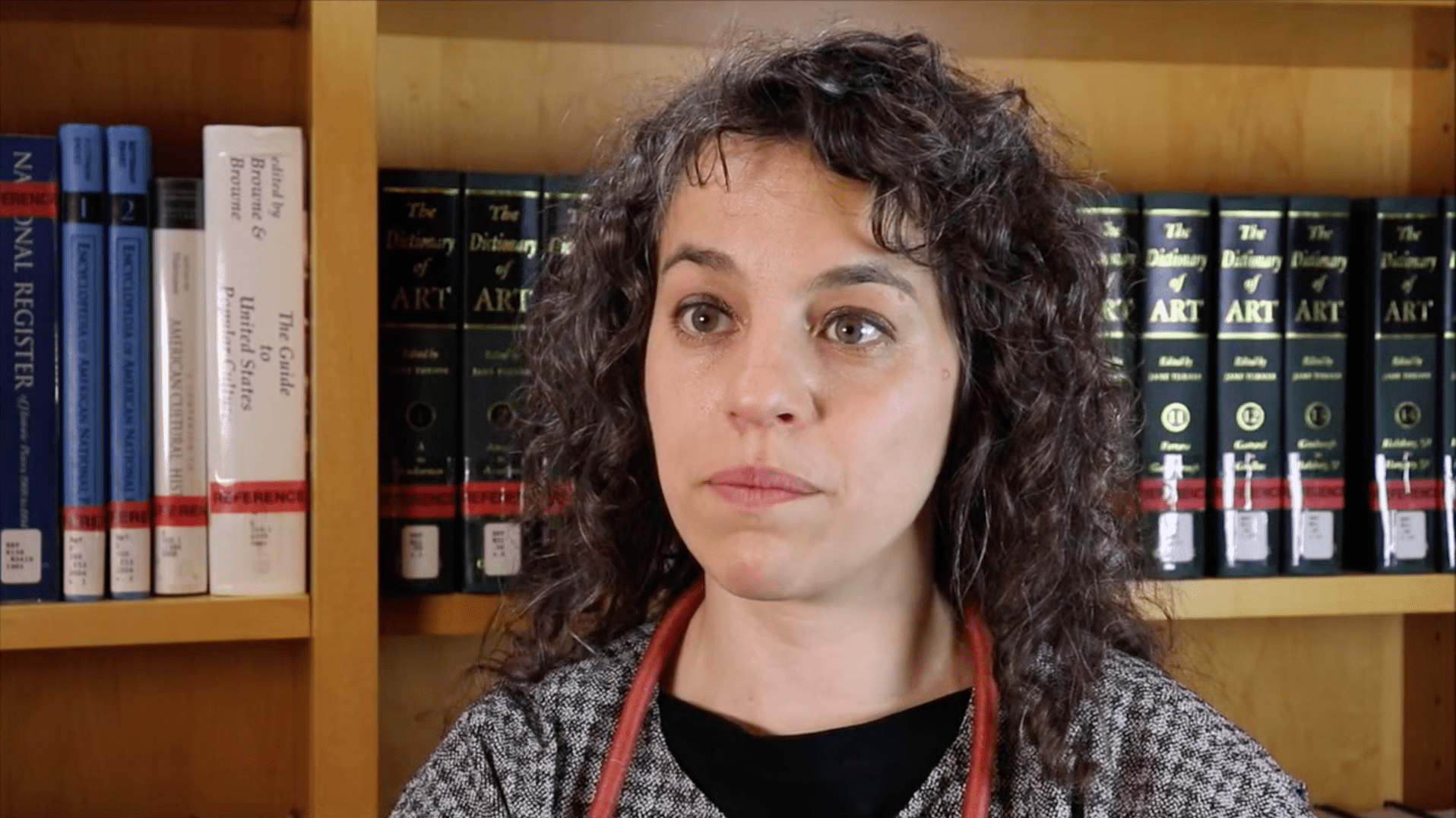
Susie Silbert compares the Corning ‘59, ‘79 and 2019 shows.
01:58 TranscriptSusie Silbert compares the Corning ‘59, ‘79 and 2019 shows. Oral history interview with Susie Silbert by Catherine Whalen, February 25, 2020, Bard Graduate Center. Clip length: 01:58.
Susie Silbert: 1959 is interesting because it was almost entirely work of design. It was work by designers from manufacturers in large part. Most of the objects were small and most of the selectors—which included the likes of Edgar Kaufmann Jr. formerly at MOMA, Gio Ponti the Italian designer, and others—were really thinking about household objects, good design for the home, and they chose things that highlighted elements of good design. They chose some enormous number, maybe ninety-two, clear glass goblets. At the same time, the museum recognized—the museum in the guise of assistant director Paul Perot and director Tom Buechner, recognized that there was a lot of interesting sculptural work coming out of the Czech Republic, and they added sixty pieces of Czech glass and that created new opportunities for the medium. That same kind of thread, this idea of artistic work in glass, was picked up in the exhibition New Glass Worldwide Survey in 1979. That show had almost no design, just a little bit from Japan and from a few other places, maybe some Massimo Vignelli baking dishes, but by and large, it was work by artists in, in their own studios, or craftsmen in their own studios. Today, the 2019 show, one of the things that I think is most exciting, at least for me, is that that exhibition brings together both the design impulse of the 1959 show, that craft or the artist author work of ‘79, and then a range of other approaches. So contemporary artists that don’t work with the materials themselves, designers that don’t work with the materials themselves, designers that do work with the materials themselves. So I think that the 2019 show New Glass Now really sums up these earlier approaches in one package.
Permalink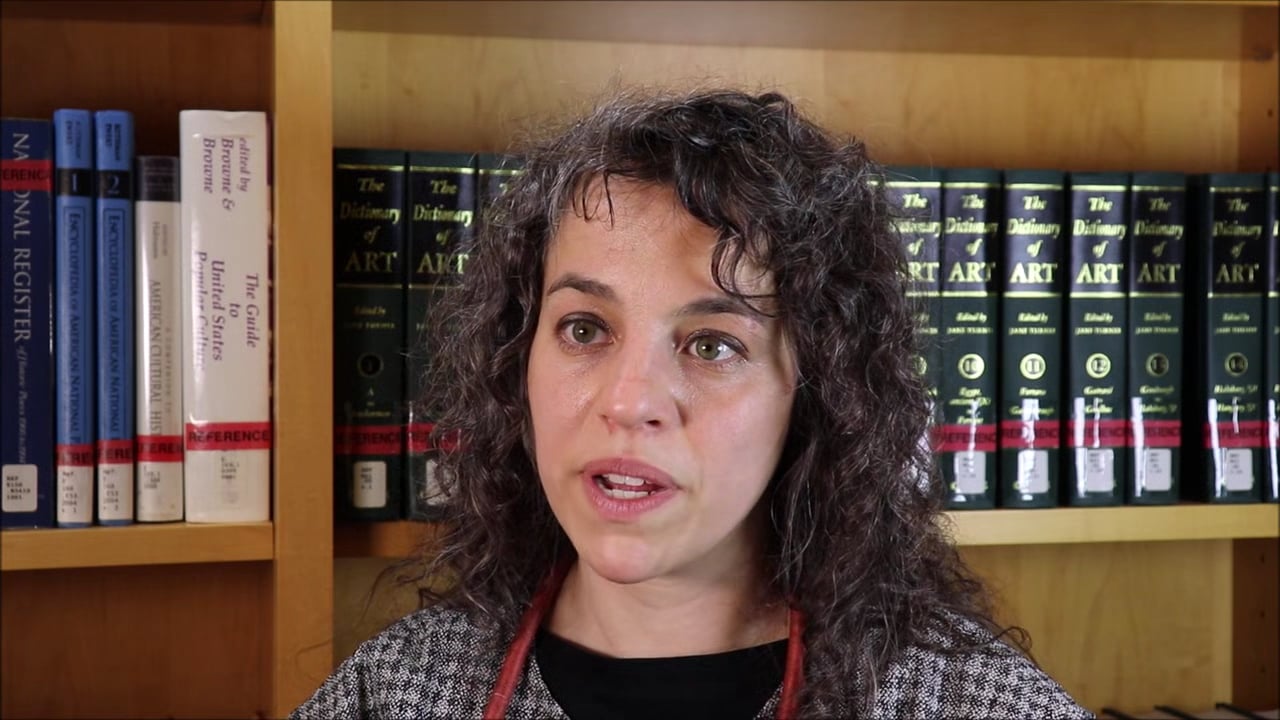
Susie Silbert discusses the need for a comprehensive look at glass in a global context.
1:01 TranscriptSusie Silbert discusses the need for a comprehensive look at glass in a global context. Oral history interview with Susie Silbert by Catherine Whalen, February 25, 2020, Bard Graduate Center. Clip length: 01:00.
Susie Silbert: One thing that I think about in my position and looking at the history of glass and looking at what I think is there and what I think could really be there, is I see that there hasn’t really been a great comprehensive look at international contemporary glass since Susanne Frantz’s book in 1989, which is a while ago now, Contemporary Glass. And I see that there’s an opportunity to really talk about in a—in a much more cohesive and comprehensive way, how global glass progressed from that moment. I think Martha Drexler Lynn does a lot in giving nuance to how the field grew in her book from 2006, but—American Studio Glass—but that’s really only looking at American studio glass, and it ends at 1990. So I think that there is a lot that really hasn’t been written or said in any kind of real comprehensive way about that period from 1990 to now.
Permalink
Susie Silbert discusses the need to connect glass with other movements and fields of cultural production.
0:49 TranscriptSusie Silbert discusses the need to connect glass with other movements and fields of cultural production. Oral history interview with Susie Silbert by Catherine Whalen, February 25, 2020, Bard Graduate Center. Clip length: 00:48.
Susie Silbert: I think that there is an opportunity to get at more than just establishing the particular facts and characters of the history of glass itself, but rather to write something that is more synthetic with other fields of cultural production, with—by connecting glass with all kinds of other movements that were happening at the same time; I think we’d get to a much better place. I think we’re finally at, in contemporary glass, at a place where the field is established enough to be able to reach out in that way, and I hope that when there are books like that, the field of glass will extend, it will be an opening up, it will invite other people in, and it will itself go out and exist in other kinds of fields.
Permalink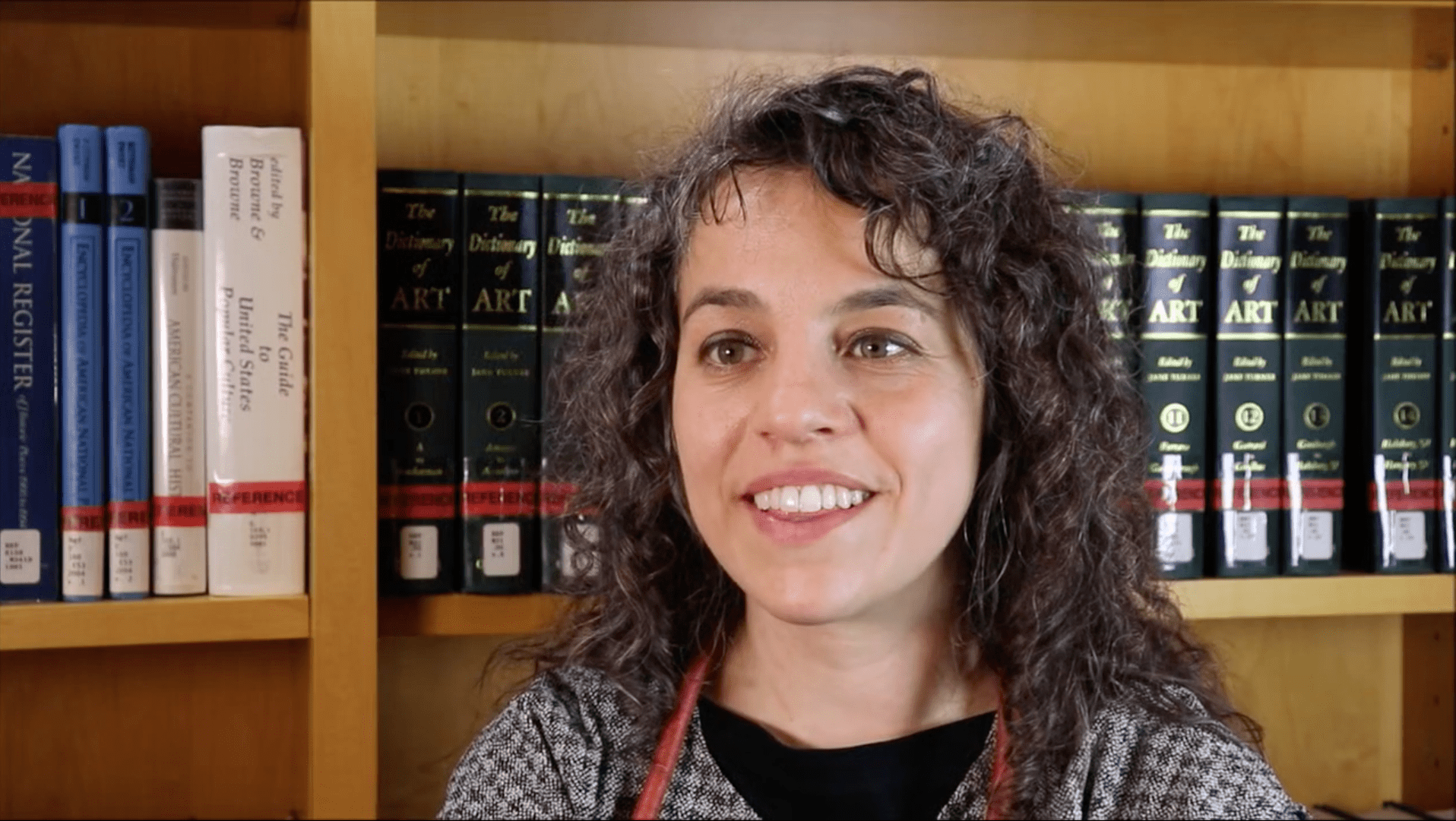
Susie Silbert discusses New Glass Now | Context, a show with The Rakow Library
02:47 TranscriptSusie Silbert discusses New Glass Now | Context, a show with The Rakow Library. Oral history interview with Susie Silbert by Catherine Whalen, February 25, 2020, Bard Graduate Center. Clip length: 02:47.
Susie Silbert: The exhibition New Glass Now | Context at the Rakow Research Library [Corning Museum of Glass, Corning, New York] that I curated with our archivist Colleen McFarland Rademaker is an exhibition that we approached really to talk about what these two shows meant for the field of contemporary glass, but also what they meant to the museum and to its formation. And the answer is that it really meant a lot. Glass 1959 was one of the first exhibitions the museum did of contemporary glass, it was certainly the largest, most comprehensive one, and it marked this turning point in the museum from its founding in 1951 looking at old glass—Renaissance, Venetian, early American—to thinking about itself as an actor in the field, and it allowed itself to stake a claim for the field because it coalesced the idea of contemporary glass as an area of practice. The 1979 show did the same thing, really put the museum at the vanguard in part because in forming that exhibition, the museum invited in the studio glass artist; many of them talk about how it is the first time they ever really felt invited by the museum to participate in the creation. So we were interested in this exhibition and looking at our own history, now that the museum is approaching its 75th anniversary, but also to think about the ways that this particular selection process which the museum has undertaken for the last now 41 years in the publication New Glass Review, which does what those exhibitions did in publication form each year. And this particular way of looking really informs how people see the field and what is—what is shown, and how people think about it, and I find it to be totally fascinating. And looking at the history of these exhibitions you see the way that that way of looking changed. So for 1959 where they were seeing the physical objects, to 1979 where they were seeing slides primarily, and then some of the physical objects, and now to mostly a digital process that becomes physical printouts later. And it changes what you choose and what gets seen. For instance, in the process in the 1979 show or today, looking at the dematerialized image of the things, we would never be able to choose 92 clear goblets, we simply wouldn’t be able to tell that they were different enough to choose. So that is also what that exhibition is about, it is about a way of seeing, this particular way of seeing that I call the ‘new glass method.’ And then how that way of seeing has informed and shaped the landscape for contemporary glass.
Permalink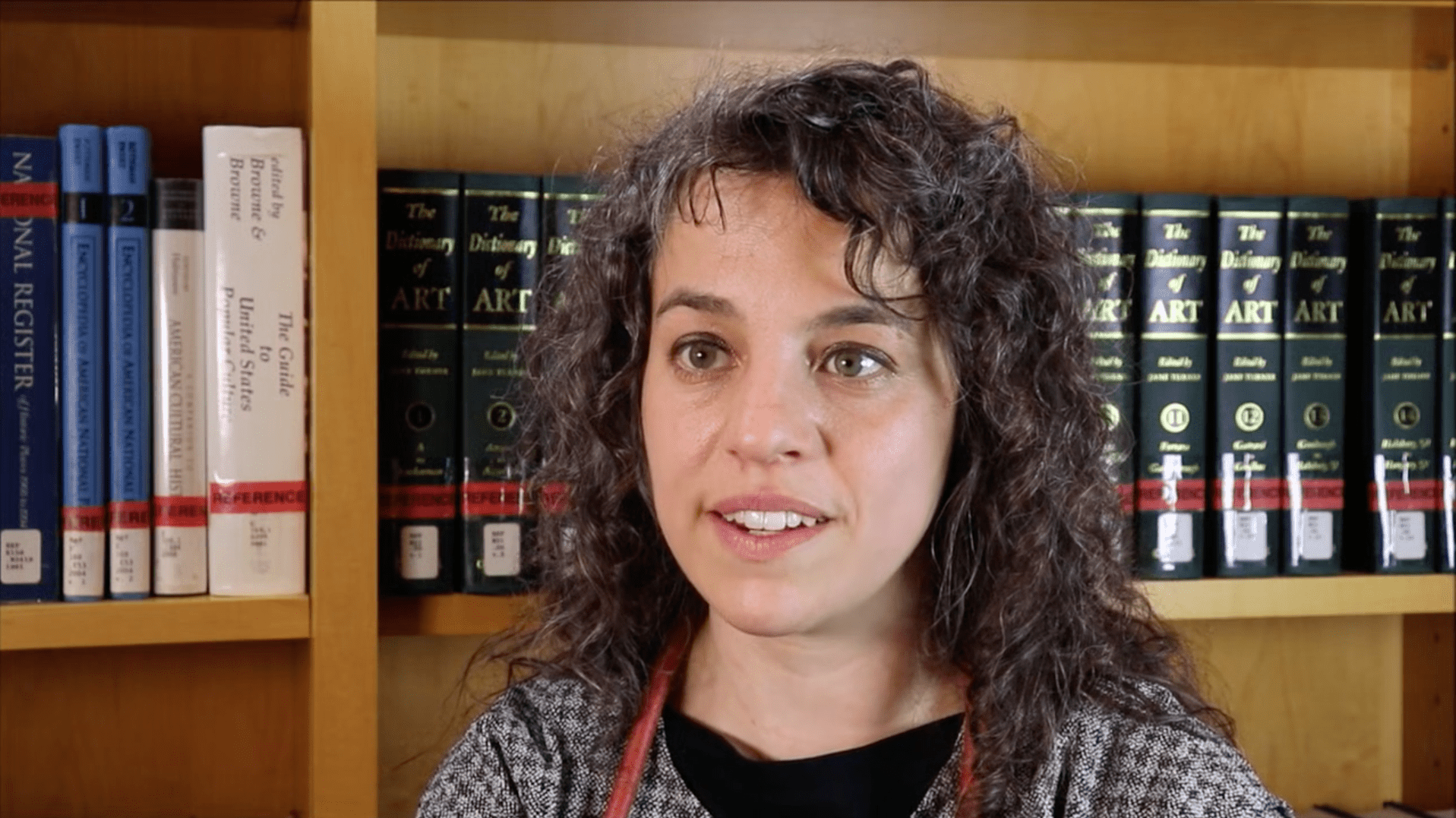
Corning Museum of Glass Curator of Modern and Contemporary Glass, Susie Silbert discusses the relationship between Corning Glass Works and The Corning Museum of Glass.
00:47 TranscriptSusie Silbert discusses the relationship between Corning Glass Works and The Corning Museum of Glass. Oral history interview with Susie Silbert conducted by Catherine Whalen, February 25, 2020, Bard Graduate Center. Clip length: 00:46.
Susie Silbert: The Corning Museum of Glass [Corning, New York] was founded by the Houghton family, which is—which are the founders of Corning Glass Works, now Corning Incorporated, as a gift to the nation to teach the country about the material of glass. And so it’s always been a nonprofit, but it has also—both Corning Museum and Corning Glass Works are closely aligned. I think one of the things that I notice the most and that infuses everything about the museum is that Corning Incorporated is a company that’s devoted to R&D, that believes in research and that sees the benefit in research and takes a long view, and I see that in everything the museum has done.
Permalink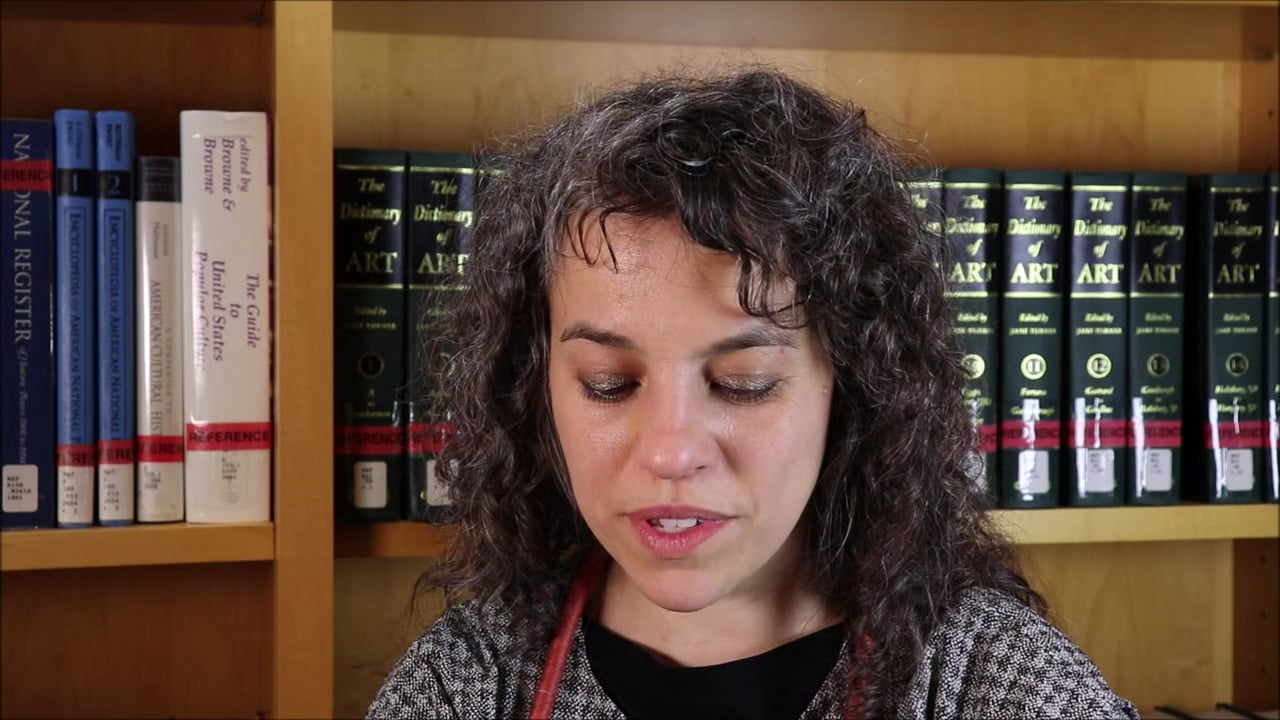
Susie Silbert discusses Suzie Peck and Karen Donnellan’s Blower Harder piece at The Corning Museum of Glass’ New Glass Now exhibition.
2:02 TranscriptSusie Silbert discusses what intrigued her about glass. Oral history interview with Susie Silbert by Catherine Whalen, February 25, 2020, Bard Graduate Center. Clip length: 02:02.
Susie Silbert: Suzie Peck and Karen Donnellan made this incredible piece Blow Harder that’s actua—in the exhibition it’s represented by two posters, a back and a front. One is gray with a big pink tool on it that’s typically called ‘jacks,’ but in this case it’s displayed in a way upside down from its normal—the normal way you see that, and it’s called ‘jills’ instead. On the other poster is pink, pink to white, with alternative lexicons for the hotshop suggesting in three, kind of, different sections, alternative language for the sexualized and gendered language commonly in use for—use in the hotshop. So, for instance, instead of ‘jacks,’ they suggest ‘jills,’ instead of ‘glory hole,’ they suggest ‘G spot’ in the feminist version [laughs]. I think the three sections are neutral language, feminist language, highbrow language, and then there’s a fourth that’s open for other—for you to put your own things in. And this work is the result of an etymological analysis they undertook to understand where these terms came from. And what they found was, by and large, the words had been in use in English language hotshops for longer than many of the connotations. But they are thinking, still, about the way that the language that we use creates or doesn’t create an inclusive environment and so their suggestions, which I love that they’re open ended, are an attempt to, I think, use humor to create an opportunity to rethink the hotshop and the kind of work that it enables. So, for instance, I don’t think there are really expecting anybody to start calling their blow partner ‘adula.’ But I think in using that kind of language they are showing equal and opposite. They’re envisioning a new life for the hotshop.
Permalink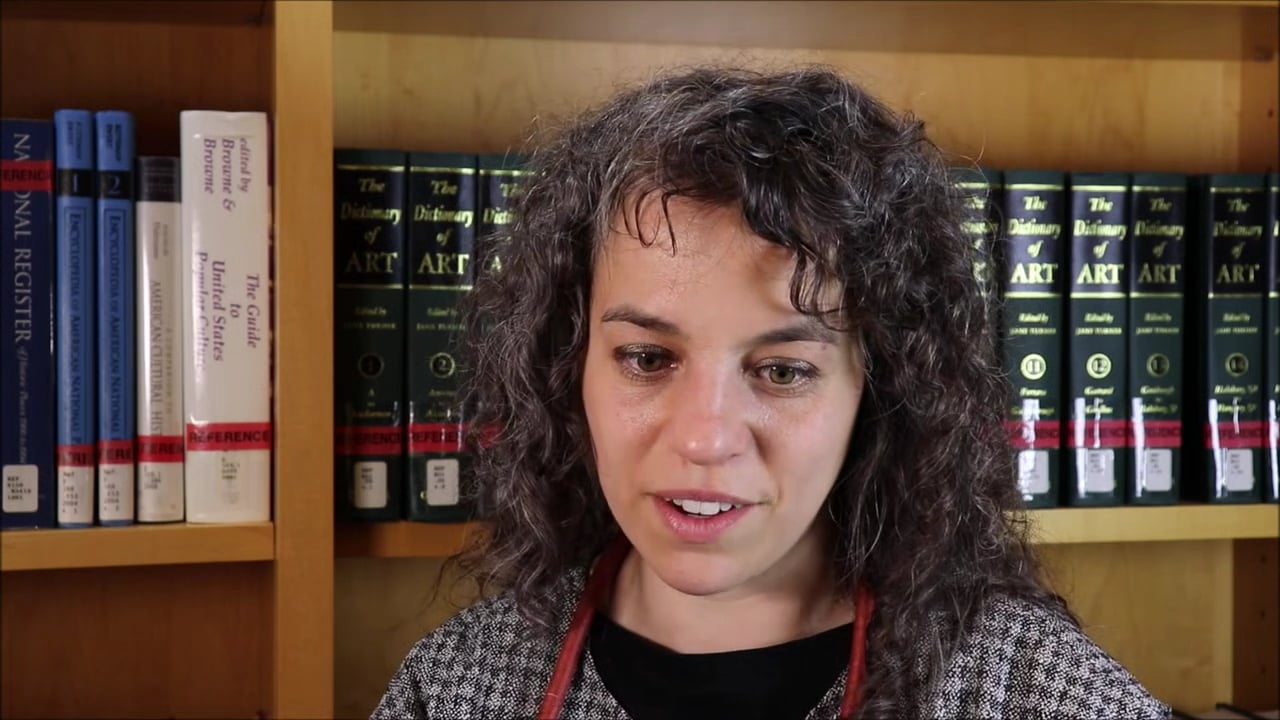
Susie Silbert discusses women in studio glass.
1:18 TranscriptSusie Silbert discusses women in studio glass. Oral history interview with Susie Silbert by Catherine Whalen, February 25, 2020, Bard Graduate Center. Clip length: 01:18.
Susie Silbert: I think a lot of inquiry into the ways that women have taken part in studio glass stop short of really inquiring at this kind of question. I think my received knowledge on this was that there weren’t that many women involved, and even when I was a student in glass in the early 2000s, it felt—even though there’s a lot of women in the class, it still felt like a pretty masculine space. But I had this incredible moment in an archive, which is my favorite place to have incredible moments, and I found this handmade book at—in the archive of the Penland School of Crafts [Penland School of Craft, Bakersville, North Carolina] that Harvey Littleton’s children had donated there from 1965 when they’re building—I think 1965—when they’re building the first hotshop. And who is building the first hotshop, all of these women in their long skirts, and their cardigans are constructing, working with firebrick, constructing this—a space for working. So I think that there’s a lot about the role of women in glass that we still have to learn beyond the few that get talked about a lot, but probably not as much as they should be, like Audrey Handler and Sylvia Vigiletti who were there right at the beginning.
Permalink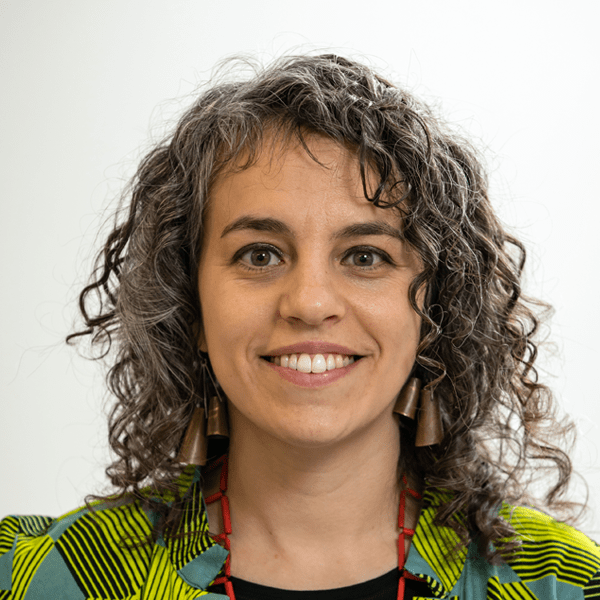
Susie Silbert discusses the geographic and demographic growth of artists in the three Corning glass survey shows.
Playing00:49 TranscriptSusie Silbert discusses the geographic and demographic growth of artists in the three Corning glass survey shows. Oral history interview with Susie Silbert by Catherine Whalen, February 25, 2020, Bard Graduate Center. Clip length: 00:49.
Susie Silbert: The other thing that’s interesting about these exhibitions, ‘59, ‘79, and 2019, is the way that they document the growth of the field, the geographic kind of growth and demographic growth of the field, so I don’t have the exact numbers in front of me but the ‘59 show maybe had worked from just 21 countries, the ‘79 show from much more, today the 2019 show had worked from 26 countries, 32 nationalities. And I think shows the range of places and people that are using the material today, so I was really kind of heartened to see that it included—2019 show included works from artists between the ages of 23 and 85, which you just couldn’t have seen in any of these earlier periods.
PermalinkSusie Silbert talks about Thomas Buechner’s Corning ‘79 “New Glass method” of selectors.
Playing2:37 TranscriptSusie Silbert talks about Thomas Buechner’s Corning ‘79 “New Glass method” of selectors. Oral history interview with Susie Silbert by Catherine Whalen, February 25, 2020, Bard Graduate Center. Clip length: 02:36.
Susie Silbert: So I chose the idea of having a panel of selectors, and I also chose the notion of putting their initials on it. Not at all out of originality, but really out of this reverence for the method, this new glass method that was innovated by the museum’s founding director, Tom Buechner, for Glass 1959, and then carried forward through New Glass Worldwide Survey, and then in every year of New Glass Review. And I think it was really a stroke of brilliance that he came up with a notion—having a panel, a panel of selectors, and not just that, but to make sure that they were not this disembodied voice. This word from on high, but to even in the 1959 show delineate their choices with their initials. And—as the more that I researched that process, the more that I thought that it was really important for a couple of reasons. In this 2019 show for me, what’s really important is to create new opportunities, new entries into the field of contemporary glass, which can be seen—can seem like a closed circuit, and I want the field to be bigger. I want people to come in, and so I think that by putting not just the selectors’ initials but their full names, and not only their full names, but actual quotes from them as the gallery text, what I hope is that the people that come to visit the exhibition see that they don’t have to like everything, which most exhibitions you sort of feel like you’re supposed to because they’re the result of his curatorial research practice. But here, I am showing that maybe sometimes only one person selected the thing and so if you don’t like it, you don’t—that’s fine. You’re doing it—you’re doing it right. That’s part of it. And then the other reason is, it would be so much easier—it really would’ve been so much easier for me to curate an exhibition by myself of 100 works that I think encapsulate contemporary glass as it is right now. It would’ve been much more straightforward, I would’ve had it done earlier, but at the same time it would’ve been so much easier to dismiss because it was just my viewpoint. But inviting a range of other people who I chose for their differences of approach and also the way they overlap with me, I could ensure that we have a much more—a much richer, a much more varied, layered perspectives on what contemporary glass is, and I think that makes it a much stronger statement. It makes it a much more important exhibition. It’s more than I could say on my own.
PermalinkSusie Silbert discusses the “selectors” she chose for New Glass Now. Oral history interview with Susie Silbert by Catherine Whalen, February 25, 2020, Bard Graduate Center. Clip length: 01:37.
Susie Silbert: You know, it’s an interesting thing, this idea of whether they’re jurors or selectors or guest curators or whatever. In the 1959 show that methodology was so new that they didn’t even use the term ‘juror,’ and the idea that there could be any women on this panel was so outside of the realm that the museum—and in the catalog they’re just referred to as ‘the gentlemen.’ So I think of it, I tried to get away from the word ‘juror,’ because I think ‘jury’ mostly we use that in a binary sense. It’s guilty, not guilty, and my experience of going through this new glass process where everybody is looking at the work together and conversing about it is much less binary. It’s much more the result of conversations, and it’s not like, you know, it’s good, not good. So, anyway, the selectors are Aric Chen, who is a design writer and curator at large at the M+ Museum in Hong Kong for visual culture. Susanne Jøker Johnsen, who is a glass maker with a really fine attention to craft, but also a curator in Denmark who does the biennial exhibitions, European Glass Context and European Ceramic Context. And then Beth Lipman, who’s an artist whose practice is rooted in glass but is much more expensive than that, from Wisconsin. And so each of them, you know, Beth with an attention to art, Suzanne especially with an attention to craft, Aric with an attention to design, really created this layered approach that I was looking for.
PermalinkSusie Silbert talks about Thomas Buechner’s Corning ‘79 “New Glass method” of selectors.
Playing02:37 TranscriptSusie Silbert discusses the “selectors” she chose for New Glass Now. Oral history interview with Susie Silbert by Catherine Whalen, February 25, 2020, Bard Graduate Center. Clip length: 01:37.
Susie Silbert: You know, it’s an interesting thing, this idea of whether they’re jurors or selectors or guest curators or whatever. In the 1959 show that methodology was so new that they didn’t even use the term ‘juror,’ and the idea that there could be any women on this panel was so outside of the realm that the museum—and in the catalog they’re just referred to as ‘the gentlemen.’ So I think of it, I tried to get away from the word ‘juror,’ because I think ‘jury’ mostly we use that in a binary sense. It’s guilty, not guilty, and my experience of going through this new glass process where everybody is looking at the work together and conversing about it is much less binary. It’s much more the result of conversations, and it’s not like, you know, it’s good, not good. So, anyway, the selectors are Aric Chen, who is a design writer and curator at large at the M+ Museum in Hong Kong for visual culture. Susanne Jøker Johnsen, who is a glass maker with a really fine attention to craft, but also a curator in Denmark who does the biennial exhibitions, European Glass Context and European Ceramic Context. And then Beth Lipman, who’s an artist whose practice is rooted in glass but is much more expensive than that, from Wisconsin. And so each of them, you know, Beth with an attention to art, Suzanne especially with an attention to craft, Aric with an attention to design, really created this layered approach that I was looking for.
PermalinkSusie Silbert discusses the “selectors” she chose for New Glass Now. Oral history interview with Susie Silbert by Catherine Whalen, February 25, 2020, Bard Graduate Center. Clip length: 01:37.
Susie Silbert: You know, it’s an interesting thing, this idea of whether they’re jurors or selectors or guest curators or whatever. In the 1959 show that methodology was so new that they didn’t even use the term ‘juror,’ and the idea that there could be any women on this panel was so outside of the realm that the museum—and in the catalog they’re just referred to as ‘the gentlemen.’ So I think of it, I tried to get away from the word ‘juror,’ because I think ‘jury’ mostly we use that in a binary sense. It’s guilty, not guilty, and my experience of going through this new glass process where everybody is looking at the work together and conversing about it is much less binary. It’s much more the result of conversations, and it’s not like, you know, it’s good, not good. So, anyway, the selectors are Aric Chen, who is a design writer and curator at large at the M+ Museum in Hong Kong for visual culture. Susanne Jøker Johnsen, who is a glass maker with a really fine attention to craft, but also a curator in Denmark who does the biennial exhibitions, European Glass Context and European Ceramic Context. And then Beth Lipman, who’s an artist whose practice is rooted in glass but is much more expensive than that, from Wisconsin. And so each of them, you know, Beth with an attention to art, Suzanne especially with an attention to craft, Aric with an attention to design, really created this layered approach that I was looking for.
Permalink